This kriya is a physical and energetic set designed to strengthen the nervous system. It’s a lively workout to leave you relaxed and renewed.
The kriya works through a combination of active, repetitive movements and deep breath. It also works on two common problems in Western culture: locked pelvis and locked shoulders.
Punjabi Drum or Bhangara Rhythm music works well for musical accompaniment as you shake in exercises 1 and 2, which are especially useful for those of us with accumulated trauma or sedentary lives. We are literally shaking it off and shaking things up.
Body Shake
Shaking activates the parasympathetic nervous system and signals the brain to calm, relax, and let go. Shaking also activates the lymphatic system of our body, which helps our body get rid of toxins.
Posture: Sit in Easy Pose. Raise the arms up with bent elbows.
Movement: Begin shaking the whole body. It should be an inward body massage. Every muscle and fiber must shake, including the arms, body, and head. Shake out all the built-up tension in your mind and body. There is no wrong way to shake. Create your own rhythm and style. Get wild if you want to. Sweat. Let your cheeks get red. Shake your entire body. Bring your body to the dead end of tiredness.
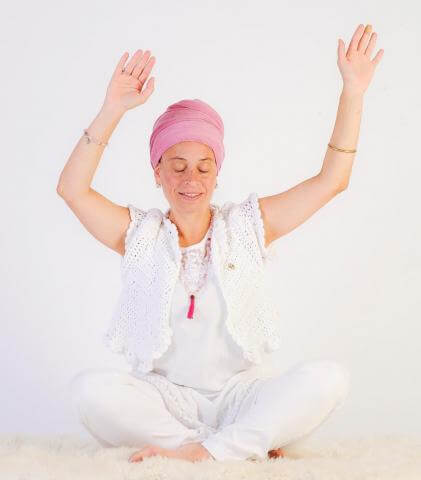
Continue for 15 minutes.
Standing Hip Shake
Posture: Come standing up straight.
Movement: Shake the hips from side to side by bending the knees alternately. Your feet can stay on the ground with your hands dangling loosely, or you can vigorously twist the hips and jump in the air while pumping your arms. Make it energetic, sweat and let the deep seated anger leave your body.
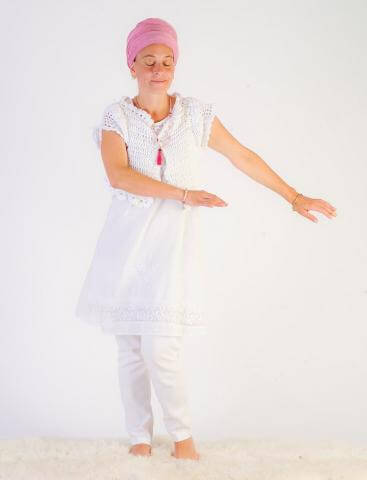
Continue for 8 minutes.
Seated Twist
Posture: Sit in Easy Pose and bring the arms straight up above the head, arms against the ears, with the palms together.
Movement: Twist the body left and right vigorously to release tension in the shoulders.
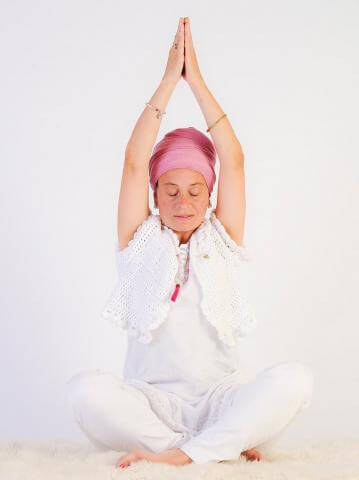
Continue for 4 minutes.
Single Leg Push-Ups
Posture: Come onto the hands and knees. Lift the left leg straight out behind you.
Movement: Bend the elbows and touch the forehead to the ground and come back up, like push-ups. Repeat 52 times, then switch legs and continue 52 times.
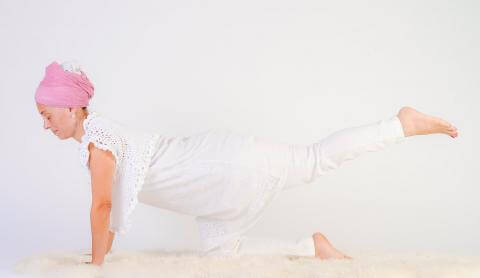
Repeat 52 times on each leg.
Camel Pose
Posture: Come up on your knees and bend back into Camel Pose, resting the hands on the heels.
Movement: Alternate between Camel Pose and standing on the knees.
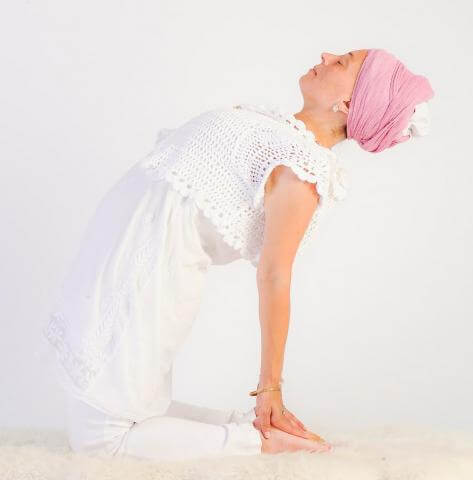
Repeat 55 times.
Legs to 90 Degrees
This exercise is similar to the movement of Pavanmuktasana, where the prana is controlled by the will. By tensing and compressing the internal organs, which improves blood circulation and stimulates the nerves, we optimize the function of the internal organs.
The physical benefits of a strong navel center include better digestion, relief from constipation, strong lower back muscles and the relief of tension in the spinal vertebrae. It improves blood circulation to the internal organs and at the energetic level, gives power for your prana to be controlled by will. It does so by eliminating the excess air in the solar center.
Posture: Lie down flat on the back. Lift the knees up to the chest and place the hands under the hips. You may elevate the hips with the hands slightly, in order to get the knees to the chest.
Movement: Extend the legs straight out. Raise the legs up to 90 degrees. Then bring the knees back to the chest.
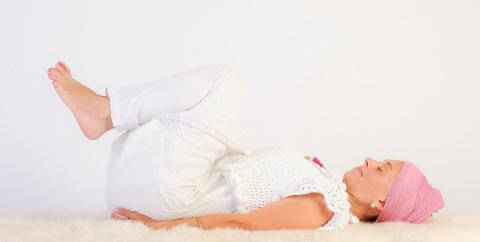
Repeat 108 times.
Sit-Ups
Posture: Lie down flat and put both hands over the Heart Center and relax.
Movement: Sit up and bring the forehead to the knees and relax back down on the back.

Repeat 26 times.
Relaxation
Posture: Corpse Pose. Lie down flat on the back for a deep relaxation. Relax, feel weightless, and surrender. If a gong is available, you may make this a gong meditation.
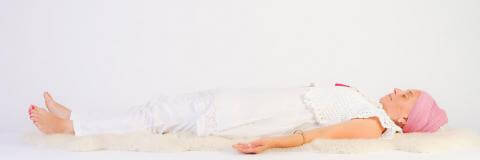
Continue for 8 minutes.
Comments:
A strong nervous system is crucial for good health. Without strong nerves, we become ill and reactive, unable to sometimes survive, much less thrive under the pressure of the times.
Irritability, decreased mental acuity, fatigue, and pain are just a few symptoms we could experience. The nervous system also handles the stress response, which, if overworked, can lead to hyper-reactivity or complete overwhelm.
In practicing this kriya, modify as needed to account for your physical, mental, and emotional capacity. You can cut the times and repetitions in half and still feel great, or if in good shape and feeling up for it, go the distance.